Lupine Publishers | Journal of Complementary & Alternative Medicine
Abstract
Milk is a proper and complete healthy diet for all individuals. Milk contains all the basic nutrients such as carbon, calcium, and rich water content which facilities bacterial contamination if hygienic conditions are not properly maintained. Different types of bacteria such as gram-positive and gram-negative can contaminate milk in many ways such as use of unclean utensils, storage tanks, and other factors which includes diseased animals, or/and animals suffering from mastitis. Most commonly isolated organisms from raw milk samples are E. coli, Shigella, Staphylococcus aureus, Klebsiella, and spores forming Bacillus species which can cause serious enteric illness if contaminated consumed. Pasteurization process extensively reduces the risk of contamination and makes the milk safer for drinking. In this study, we have collected 24 samples in total of raw milk (n=12) and pasteurized milk (n=12). Further, we processed the milk samples on different agars. For raw milk, we used Nutrient agar, Mannitol salt agar, and Eosin Methylene blue agar whereas for pasteurized milk we have used dye reduction test. Raw milk indicated high contamination as compared to the milk which is pasteurized. Even some locally available pasteurized milk has detected contaminating agents. As the results indicated that raw milk is highly contaminated so for the safety of individuals and the population, it is suggested that we should use pasteurized milk in our daily life. Furthermore, we must apply some safety precautions including maintenance of tanks, storage temperature, and sterilization of utensils in which milk is kept.
Introduction
Milk is extremely healthy food for all individuals. Milk of
cattle, buffalo, goat, and sheep contains the same but different
concentrations of a chemical constituent AU-Hahn et al. [1]. A vast
variety of products are made from milk such as cheese, yogurt,
butter, cream, and other dairy food. The nutritional complex of milk
is extremely multifaceted. It contains all the main molecules which
are required for the body and bone development. One cup of whole
cow’s milk contains calories, proteins, 88% water, carbohydrates,
sugar, and fiber Langiano E et al. [2]. All these compounds make
the milk, an excellent source of high-quality food for all age groups
Elgohary et al. [3]. A carbohydrate makes up around 5% of milk
usually in the form of lactose sugar which some individuals cannot
digest Mohammad-Mehdi Soltan et al. [4]. In milk, some vitamins
are also present such as vitamin B12, vitamin D, and calcium,
riboflavin, phosphorus. Clean milk is drawn from a healthy cow
that has a low microbial load and good for drinking but when
milk is stored at a low temperature, it can be spoiled quickly and
contaminated with bacteria. We can say unpasteurized milk acts as
the best medium for microbial development Uddin et al. [5].
Raw milk comes from cows, goats in farms which is free from
microorganisms, but the treatment process of milk can make it
harmful or unhealthy Boycheva S et al. [6]. Raw milk is contaminated
with various sources such as a closed milking system, improper
bulk tanks, unhygienic storage equipment, and unclean processing
area and other factors Mungai EA et al [7]. Various types of bacterial
species can contaminate milk in different ways which includes fecal
contaminated organisms, gram-positive, and gram-negative etc.
Oliver et al. [8].
Pasteurization is a process in which raw milk is treated at
high temperatures to reduce or eliminate the bacteria from milk
and make the milk safer for consumers Desmasures N et al. [9].
Pasteurized milk is considered to be safe for a person because the heat
treatment process kills the bacteria and other organisms such
as salmonella, Campylobacter, E. coli, etc Yoti et al. [10]. Pasteurized
milk does not reduce the nutritive value of milk. Basically, in the
pasteurization process, heating of milk and quick cooling leads to
the elimination of certain bacteria. For best results, pasteurized
milk heated at a high temperature of 145 degrees Fahrenheit for 30
minutes. This method is also called batch-pasteurization, which is
not commonly available Banwart GJ et al. [11].
There is another method is the Ultra-Heat Treatment method
which involves very high temperatures and less time such as milk
is treated with high heat 280 degrees Fahrenheit for 1 to 2 seconds
Campos MRH et al. [12]. This temperature extended shelf life for
up to 9 months. Another method is flash pasteurization, in which
a liquid milk sample is heated for 15 minutes at 161.6 degrees
Fahrenheit Chatterjee SN et al. [13]. This method is also known as
high-temperature short time.
In the early 20th century, there were no proper instructions
for temperature and heating time to get rid of the bacteria from
milk. But in 1943, HTST (high-temperature short time) came in
use Carvalho PLN et al. [14]. In this method, 72 °C is used for 15
seconds while in batch pasteurization, 63 °C is used for 30 minutes
to maintain the thermal death time (the temperature which is
required for complete killing of bacteria) Desmasures N et al. [15].
Another important and commercialized method of
pasteurization is low temperature-short time (LTST). In this
method, the temperature is used for the killing of bacteria at 145 F
for 30 minutes Devi et al. [16]. It is also known as vat pasteurization.
This method takes a thousandth second to treat milk, so it is called
millisecond technology (MST).
Milk contamination occurs from various factors such as
diseased animals which are suffered from mastitis (an animal
disease), from improper cleaning of milking equipment and milk
tanks in which milk is collected, stored, and transported Deshmukh
AM et al. [17]. The most common cause of raw milk contamination
is soiled teats, udders, and tails of animals. Milk is an enrichment
medium for the development of microbes Eberhart RJ et al. [18].
During the transportation of milk at normal temperature, the
microbes multiply and decline the quality of milk. This study was
conducted to detect and analyze the pathogenic microbes among
different collected samples of raw and pasteurized milk Ekici K et
al. [19].
Material and Methods
Sample collection
We have collected 24 milk samples to conduct this study. Out of which, twelve (12) raw milk samples were collected from local dairy shops, and twelve (12) pasteurized milk samples were collected of different brands from the supermarket.
After the collection, the sterility of the samples was checked.
After drawing a 1ml sample each from different bottles by
placing them at refrigeration temperature. The quality of these
samples was checked according to the following steps:
1. All samples were collected aseptically.
2. All the 12 samples of raw and pasteurized milk had streaked
on N.A, EMB, MSA plates.
3. Plates were incubated at 37c for 24 hours.
4. The next day plates were observed, and biochemical testing
had performed for further identification.
Biochemical testing
Biochemical testing was performed to differentiate bacterial species. Bacterial species were differing from each other due to some changes in carbohydrates, protein, fats metabolism, production of certain enzymes, etc., Vlaemynck G et al. [20]. There are various types of biochemical test which were performed for various bacterial species such as gram -ve isolates, IMVIC was performed.
Imvic (Indole Methyl Red Voges Prokeur Citrate)
Indole test: The indole test is mainly done for the detection of
the tryptophan enzyme in which tryptophan broth was incubated
with tested organisms. It was incubated at 37 °C for 24 hours. After
incubation, Kovac’s reagent was added to check the presence of the
enzyme. If the tryptophan enzyme is present red ring is observed
at the top of the layer of broth (cherry red color represents indole
present).
Methyl Red: This is a biochemical test that is used to detect the
formation of different acids by microorganisms such as acetic acid
and formic acid by the fermentation of sugars Beerens H et al. [21].
Testing isolates were inoculated in Clark’s broth and incubated at
37 °C for 24 hours. After incubation red color was observed by the
addition of methyl red which indicated production or fermentation
of sugars. If acid produces the color of broth change into red after
adding indicator whereas the organism does not produce acid the
color of broth remains yellow Pathogen Safety Data Sheets and Risk
Assessment 2014 [22].
Voges Proskauer Test (VP): This test is mainly used for the
determination of organisms that produces acetyl methyl carbinol as
a result of glucose fermentation. Tested organisms were inoculated
in Clark’s broth and incubated at 37 °C for 24 hours. After incubation
1ml of broth culture was transferred in a tube, in which 0.6ml of
5% alpha naphthol followed by 0.2ml of 40% KOH were added. A
positive test indicates the development of red color after 10 to 15
minutes. A negative test indicates no coloration Banwart, GJ et al.
[11].
Citrate Test: The citrate test was done to detect the ability to
consume citrate by an organism as the only source of carbon and
energy. Tested organisms were picked from isolated pure culture
and streaked on citrate agar slant and incubated at 37 °C for 24
hours. After incubation, the color of the slant was observed. When
organisms metabolize the citrate the color of the slant turns into
bright blue. If organisms do not utilize the citrate the color of the
slant remains green.
TSI (Triple Sugar Iron Test): TSI stands for a triple sugar
iron test. This analysis was performed to check the capability of a
microorganism to produce hydrogen sulfide by the fermentation of
available sugars. This test is made for the enteric bacteria which
includes Shigella and salmonella species. This test indicates that
tested organisms ferment sugars such as glucose, sucrose, and
lactose that showed the production of by-products. If slant and butt
both turned yellow indicate that an acidic condition was developed,
and all the sugars were fermented. If alkaline slant and acidic butt
show only glucose fermentation while both butt and slant show
alkaline that indicates that no sugar fermentation has occurred.
The blackening of the medium was indicated by the production of
hydrogen gas. Carbon dioxide gas production is indicated by the
cracks and bubbles formation.
Urease Test: Urease test is performed to detect the breakdown
of urea by the action of an enzyme urease done by microorganisms.
Streaked the isolated colony on urea slant and incubated at 37
°C for 24hours than observed the color change of slant. If urease
enzyme present urea breakdown into ammonia and slant turned
pink in color. If organisms were not produced urease enzymes the
color of slant remains the same light orange.
Dye reduction test (methylene blue): This test was used to
estimate the microbial load of pasteurized and packed milk (Table
1).
Results
Bacterial Identification in raw milk samples
In our study different types of bacteria were identified from the raw milk samples. According to these results, the most common isolates in raw milk samples were staphylococcus aureus, Salmonella, and Bacillus. Other enteric organisms were also found like E. coli, Klebsiella spp, and Proteus spp. We performed bacterial identification on N.A, EMB, and MSA for all 12 raw milk samples. The following results were obtained that are mentioned in Table 2. These organisms are further identified on the basis of colonial and biochemical characteristics as mentioned in Table 3.
Methylene blue reduction test
No colonial growth found on the plates of EMB, N.A, MSA. Samples were proceeded to perform M.B.R. The results obtained are mentioned in Table 4 & Figure 1A-1E.
Discussion
Milk is the best food for all age groups with all requirements
which is necessary for individual growth and development. Different
types of milk are available for the consumer to consume according
to their taste and desire Karmali MA et al. [23]. Milk is composed
of all basic nutrients such as calcium, phosphorus, vitamins, and
water content Potter M et al. [24]. The composition of milk is
considered as complete nutrition. The high amount of nutrients in
milk supports the growth of microorganisms and causes spoilage
of milk. High water content in milk is the basic factor for bacteria to
grow Hill C et al. [25].
Raw milk is unheated (untreated milk) are readily available
in the markets. Which is highly contaminated with pathogenic
bacteria. Bacteria are present in the environment that’s why it
contaminates the milk and its products easily Czaplicki A et al. [26].
Milk becomes contaminated with different ways such as fecally
contaminated water when added in the milk, unsterile utensils,
improper bulk tanks, soil, and major and most dangerous factor
is that unhealthy condition of milking man because hygiene of
personal is very important if caretaker of cows and the milking
man was not properly clean in ordered to wash their hands and if
suffer from any diseases so organisms should be transferred and
contaminate the milk another factor is a diseased animal Hijiumi et
al, 2011. Animal health is also very important because cow suffer
from mastitis and organisms enter into milk and causes spoilage
Ekici k et al. [17].
According to different studies, untreated milk is not healthy
for human use until it is not properly boiled. But sometimes after
boiling, microorganism remains present in the milk and causes
enteric diseases such as diarrhea, vomiting, etc Oliver sp et al. [21].
All these effects and health issues of raw milk increases the value
of pasteurized milk. Pasteurized milk is of better quality and long
shelf life than raw milk and no health issues are measure from
pasteurized milk Hill C et al. [23]. Pakistan is the biggest milkproducing
country in the world. Milk contains major nutrients that
support human health and makes the bones strong and prevent
osteoporosis, but these nutrients also support the growth of
bacteria which causes contamination. According to studies typhoid
fever is very common in young children.
In this study we collected 24, out of which 12 were raw milk
samples from local dairy shops of Karachi city and 12 were branded
and local pasteurized milk samples such as Olpers, Haleeb, Nestle
Milk Pack, Nurpur, Nestle Nesvita, Pakola, Day fresh, Good milk,
Omang, Gourmet milk, Daily Dairy, and Trang. This study showed
that raw milk is highly contaminated with soil, unhealthy water,
and a high number of pathogenic bacteria. Whereas no growth was
observed in pasteurized milk.
The outcome shows that the numbers of aerobic spores
are readily available in milk samples because the reported
concentration of aerobic spores in grass and maize vary from 10 to
>105 per g. When spores present in soil and animal feed, they form
high numbers of spores these spores excreted in feces. Bacillus
species are rich in the environment and therefore naturally present
in the soil. The proportion of milk samples that showed activist for
S. aureus, the major pathogen-related with diseased cow condition
worldwide. All types of bacteria which are present in milk samples
are diseases causing but some of them are not related to foodborne
diseases such as Klebsiella and Proteus these organisms cause
pneumonia and urinary tract infections, respectively.
In this study the presence of microorganisms in the pasteurized
milk was less than raw milk, the Methylene blue reductase test
was performed for the detection of the quality of milk sample,
pasteurized milk samples including Olpers, nestle milk pack, Haleeb
and Omang showed the excellent quality of milk with 6hrs, Pakola,
good milk, Trang and nestle Nesvita indicated good value of milk
with 5 hours reduction time while Nurpur, the day fresh, daily dairy
and gourmet milk showed poor quality and their reduction time
was 1hr to 2hr. The implementation of good sanitation practices
and applications of HACCP (hazard analysis of critical control
points) will improve the quality of milk and also done by increasing
the temperature and timing of the heating process will help to
reduce the growth of microorganisms Armstrong C et al. [27].
A study of S. aureus in raw and pasteurized milk was conducted
in the Reconcavo area of the state Bahria, Brazil. In this study, a
total
of 70 samples were studied out of which 50 samples of raw milk and
20 samples of pasteurized milk were taken. Out of 50 samples of
raw milk, 34 showed the contamination of S. aureus while out of 20
samples of pasteurized milk 6 samples contaminated with S. aureus
with percentages of 68% and 30% respectively. This contamination
showed that both types of milk were health hazardous. In Dhaka
city Bangladesh, a study for the characterization of pathogenic
bacteria in raw and pasteurized milk had conducted. This study
showed raw milk is highly contaminated with fecal bacteria known
as Shigella, Klebsiella E. coli, whereas pasteurized milk was slightly
contaminated with different types of bacteria such as Bacillus app
Uddin et al. [5].
Pasteurization quality will be increased by increasing the
heating time because milk becomes contaminated by different
types of microorganisms that might be reduced by plenty of milking
and transport measurement. The large number of Escherichia
coli in milk samples showed that fecal contamination in milk and
diseased condition of cows. Proper time and temperature in the
pasteurization process must be maintained to eliminate pathogens
and other contamination also some immediate actions for raw
milk safety should be taken because individuals may suffer from
illnesses. Due to the use of raw milk because of their unawareness.
Conclusion
e general public because of the possible presence of pathogenic bacteria. Internationally, outbreaks of foodborne sickness have been attributed to unprocessed milk. This can be reduced by using boiled water for cleaning all utensils and equipment. It is also preferred that detergents or disinfectants should be dissolved in boiled water for cleaning of all utensils and equipment which immediately helps to reduce milk contaminates. For pasteurized milk or locally available brands of milk, one should make sure that their processing areas are cleaned and proper which provides, ultra-high temperature to decrease bacterial contamination in milk.
Read More About Lupine Publishers Journal of Complementary & Alternative Medicine Please Click on below Link:
https://lupine-journal-complementary-medicine.blogspot.com/


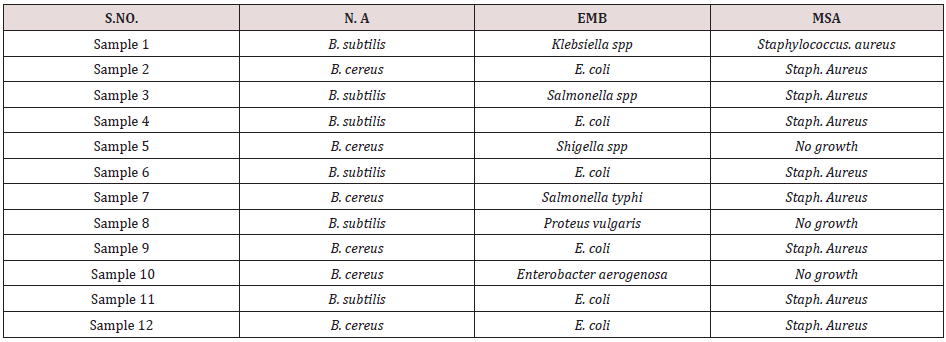

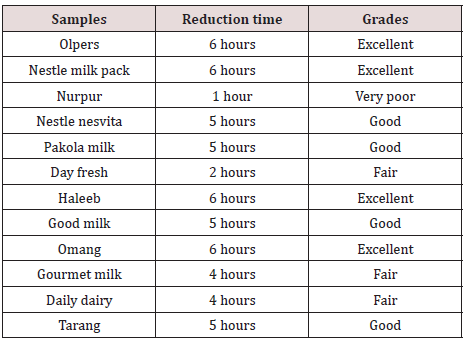
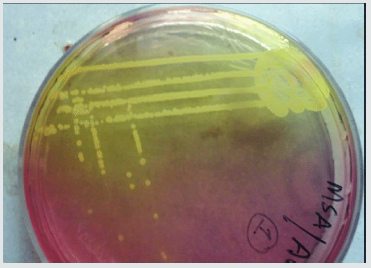
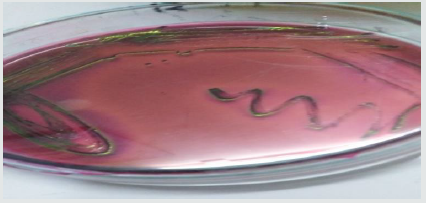


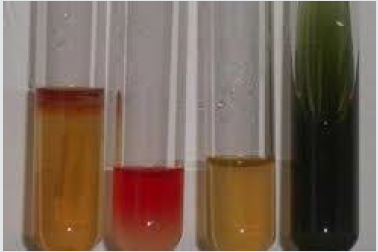

No comments:
Post a Comment
Note: only a member of this blog may post a comment.